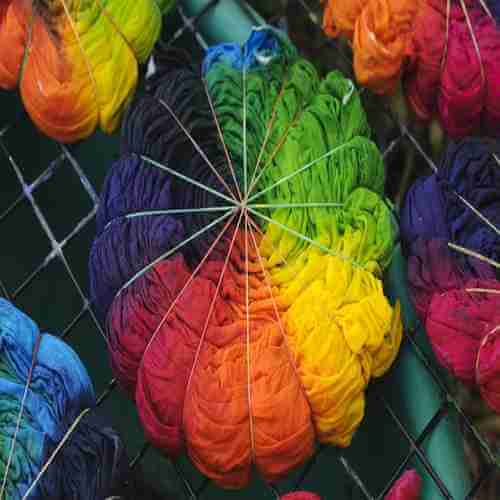9 Easy Tie Dye Ideas for Beginners at Home
Nowadays, tie-dyeing has become very popular as a lot of unique patterns that are possible to be produced by this method. It is a dyeing method in which the best t shirts for tie dye is folded, twisted, pleated, or crumpled and bound by strings followed by the application of the dye.
For a beginner, this task may seem daunting. That’s why we’ll cover the easy tie dye ideas for beginners first and will also instruct you to achieve them with the best fabric dyes. These simple yet creative designs will help you build your confidence as you explore the art of tie-dyeing. Additionally, we’ll provide tips on how to combine vibrant patterns with the best paint for clothes to further elevate your creations. By using the right materials and techniques, even a novice can achieve stunning results effortlessly.
At first, we will talk about the basic steps of tie dyeing (common in all patterns). And then the steps of producing particular patterns will be discussed.
Basic Steps of Tie Dyeing
Step 1: Washing

Wash the fabric or garment before dyeing to remove any sizing agents if pre sent.
Step 2: Binding
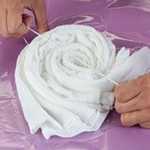
Twist, fold, and bind the fabric or garment based on the tie-dyeing technique you want to produce.
Step 3: Dye Mixing
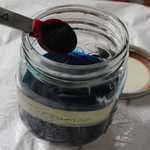
Special types of tie-dyeing bottle is found in the market. They consist of the dye along with soda ash. Otherwise, you can buy soda for tie dye. Just add water and shake well to mix the dyes in those bottles.
Step 4: Dyeing

Apply the dyes into the different sections of the fabric according to your selected pattern. To make sure that you cover all the sections of your fabric or garment, rotate and or flip them as necessary.
Step 5: Runtime
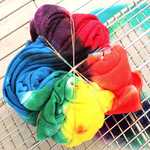
Keep the fabric or garment in a plastic cover to make sure it remains damp. Typically, 6-8 hours will be enough.
9 Easy Tie Dye Ideas for Beginners at Home
It’s impossible to cover all the tie dyeing techniques in a single post since there are so many of them. Also, new techniques are being developed every single day. Therefore, I will discuss only the most popular and convenient tie dyeing techniques.
1. Spiral Tie Dye Technique
1. Presoaking of the fabric is not necessary as the special dye bottles have soda ash mixed with the dye. First, lay the washed damp fabric on the working surface.
2. Then pinch the fabric at the center at which the spiral pattern will start.
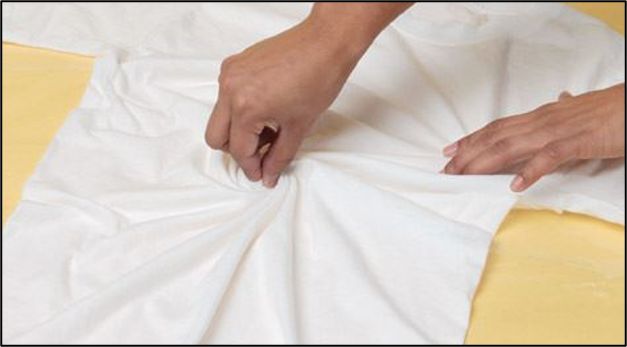
3. Until all the fabric comes to a spiral shape, continue to twist it. Use 3-4 rubber bands to wrap and secure the fabric. For creating 6-8 wedge shapes, crisscross the bands.
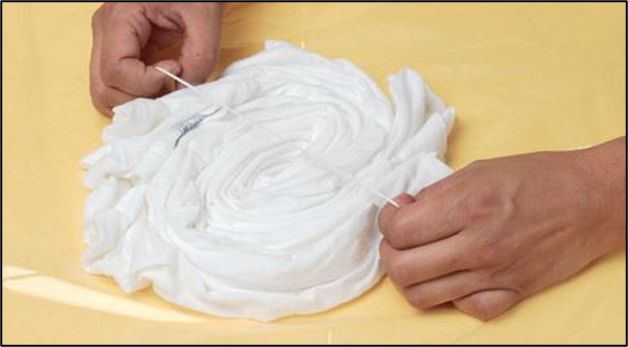
4. Mix the dyes in the special dye bottles. The number of dyes is dependent on the number of wedges present in your fabric. As there is no wrong way in tie-dyeing, do experiments as you wish. Apply the dyes on the face side of the fabric, then flip it and apply it on the backside. Finally, follow the last basic step (step 5).
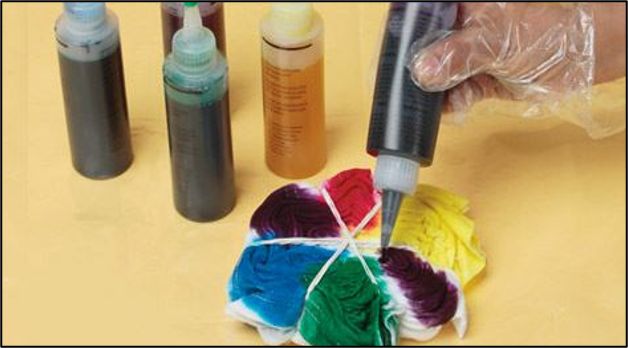
The final design is given below –
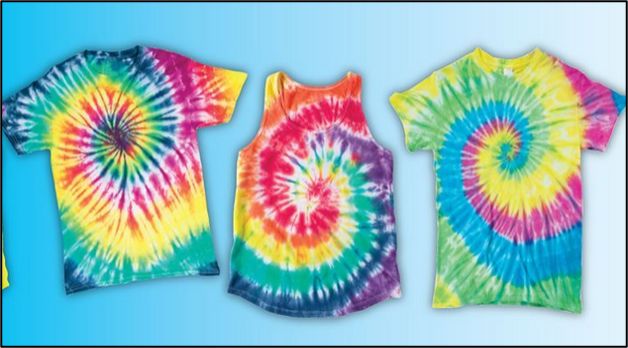
2. Heart Tie Dye Technique
- First, fold the washed damp shirt into half. Then outline a heart shape with a washable marker.
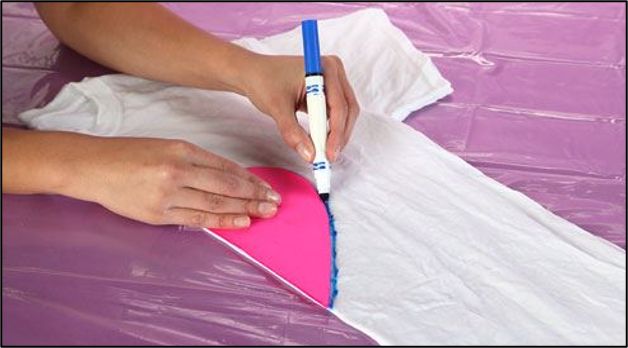
2. Pleat the fabric tightly along the line.
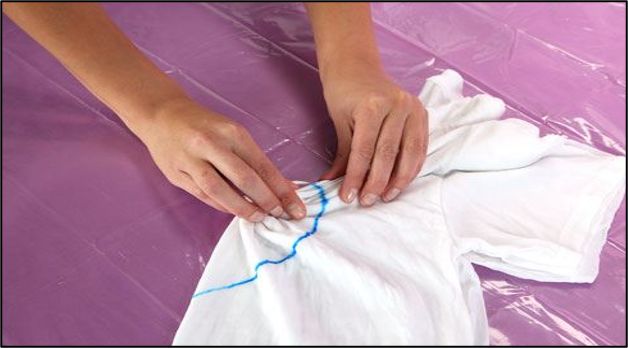
3. Bind the pleated fabric tightly with a marker along the marked line.
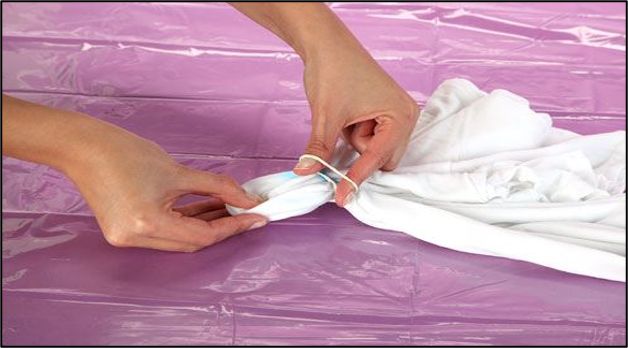
4. Use additional rubber bands to bind the fabric like the picture given below.
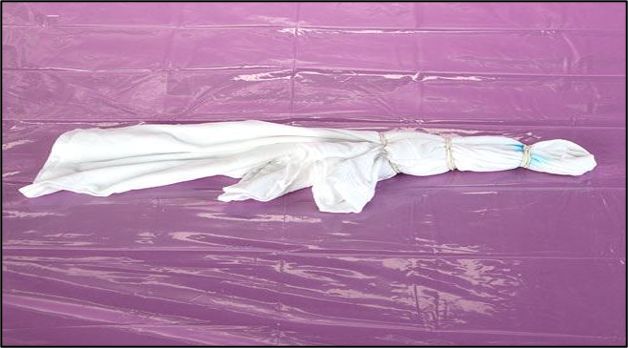
5. Apply different dye colors between the rubber bands in the fabric. Finally, follow the last basic step (step 5).
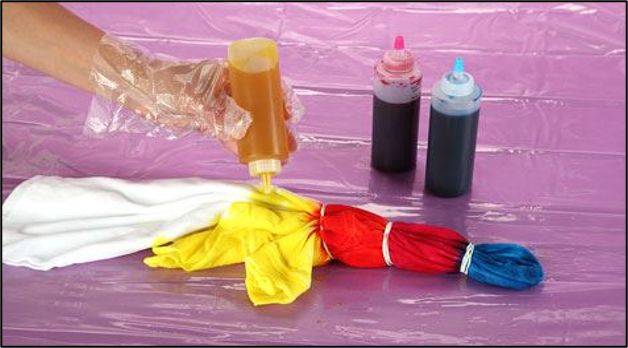
The final design is given below –
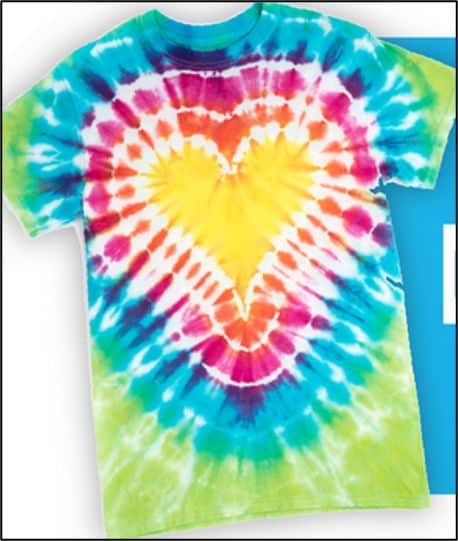
3. Shibori Tie Dye Technique
1. Twist your garment tightly along the length, just like twisting a towel.
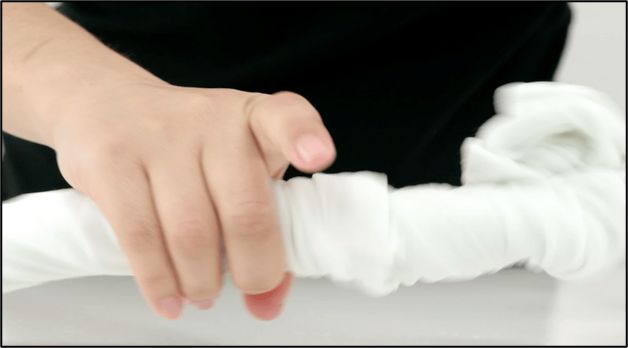
2. Flatten down the garment after coiling it into a spiral form.
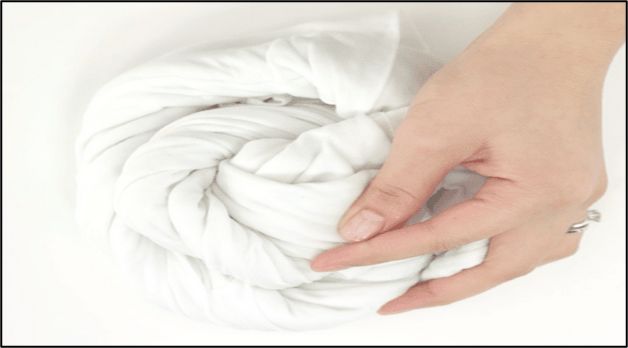
3. Bind the coiled shirt in places by using different rubber bands.
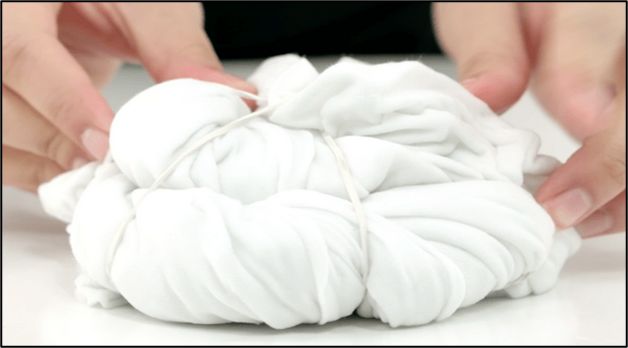
4. Apply dye on one side and flip it over. Then apply dye on the other side. Finally, follow the last basic step (step 5).
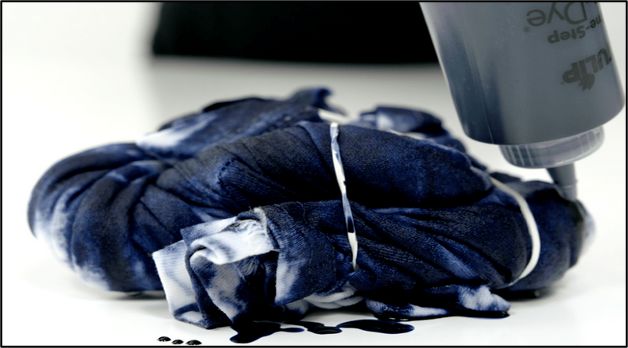
The final design is given below –
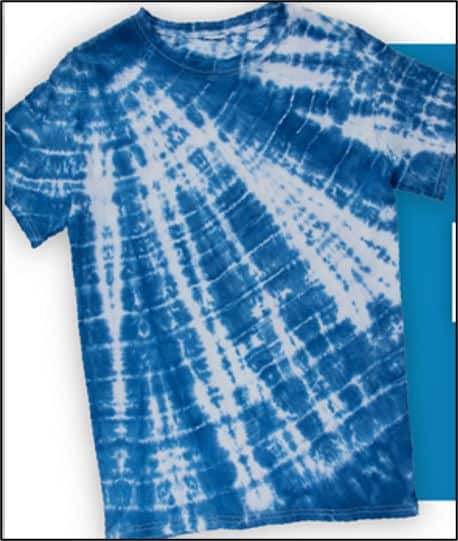
4. Spider Tie Dye Technique
1. First, fold the washed damp garment in half.
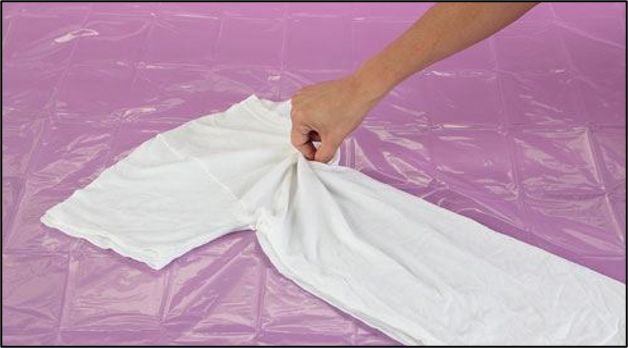
2. Pinch the garments at the place where you want the center of your spider. Until the entire garment is spiraled, continue to twist it.
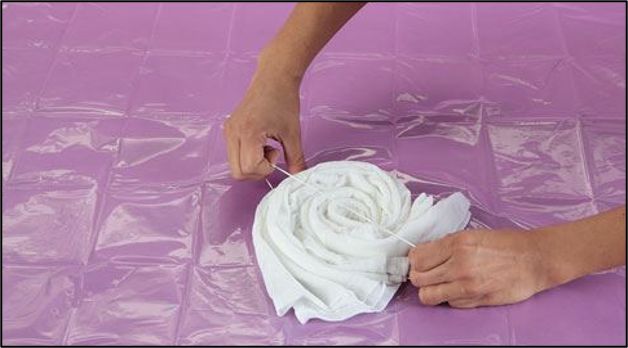
3. For creating six wedge shapes, bind the garment with three rubber bands that intersect each other.
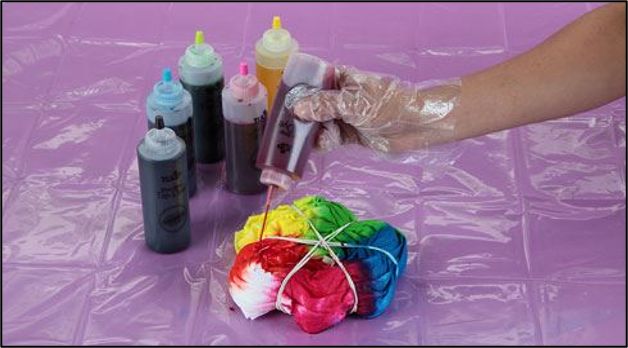
4. Apply dyes according to your wish in each of the wedges. Finally, follow the last basic step (step 5).
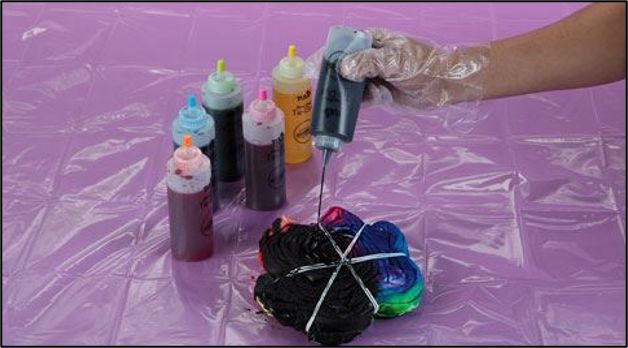
The final design is given below –
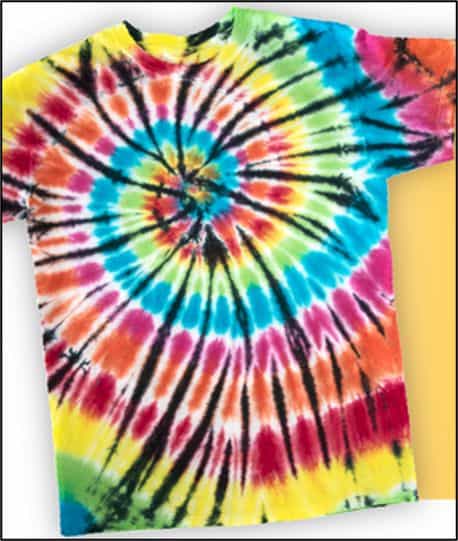
5. Stripes Tie Dye Technique
1. First, lay the washed damp garment on the work surface, pleat and fold the garment horizontally or vertically like the picture below.
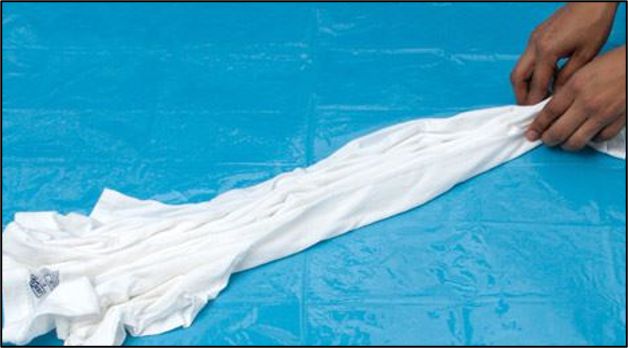
2. Secure the garment with rubber bands, add as many rubber bands as you wish. Even spacing is necessary. The spacing depends on how wider you want your stripes to be from each other.

3. Apply dye according to your wish. Finally, follow the last basic step (step 5).
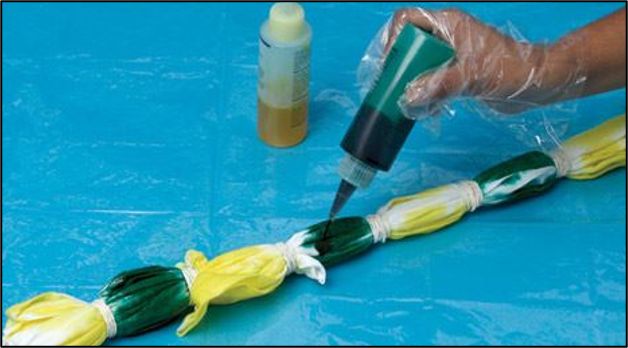
The final design is given below –
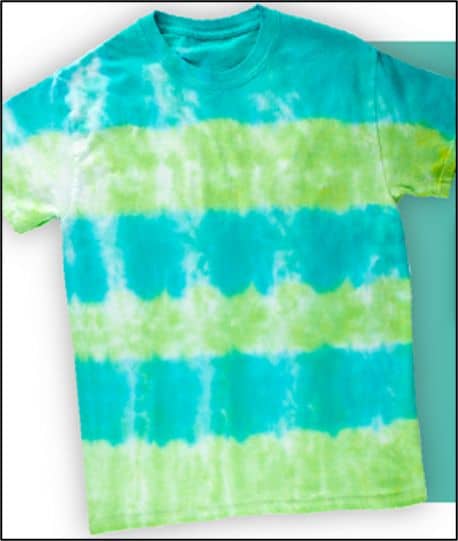
6. Folding Tie Dye Technique
1. First, fold your fabric in half.
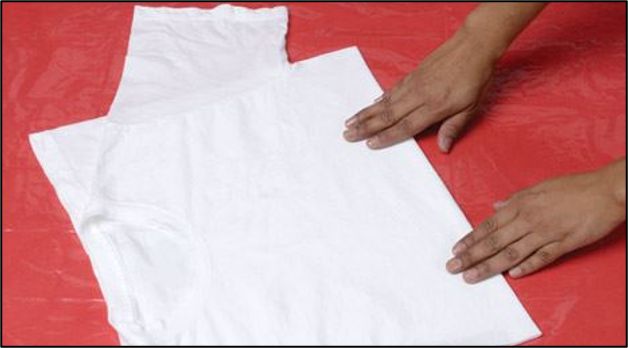
2. Fold again in half, after that once again so that eight layered panels are obtained.
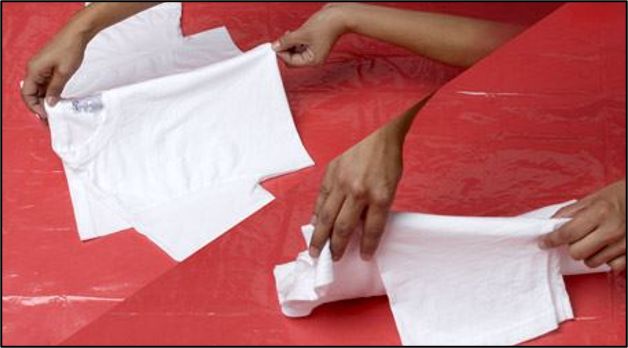
3. Use the special dye bottles to apply the dye to the folded edges of the fabric on both sides. Finally, follow the last basic step (step 5).
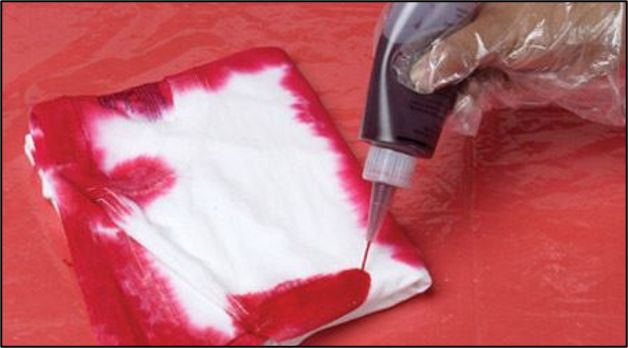
The final design is given below –
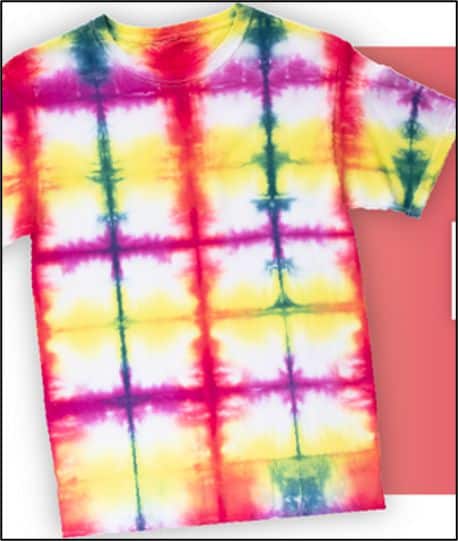
7. Ombre Tie Dye Technique
1. First, along the edge of the fabric, apply dyes in a line.
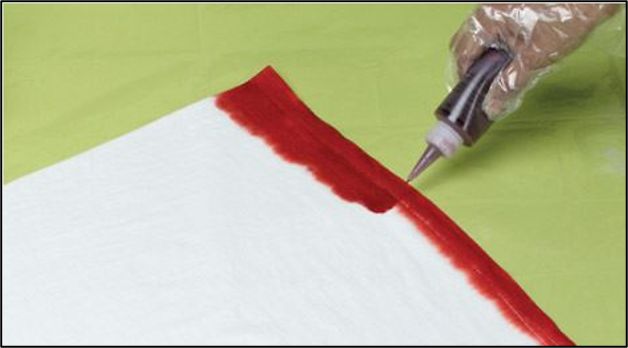
2. To paint dyes upward along the body of the fabric, use a paintbrush.
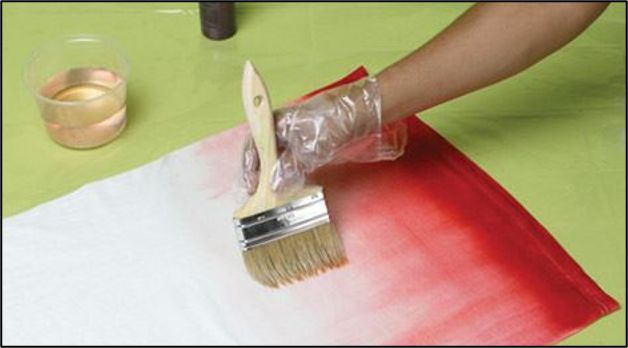
3. To create the gradient color, dip the paintbrush into water. Finally, follow the last basic step (step 5).
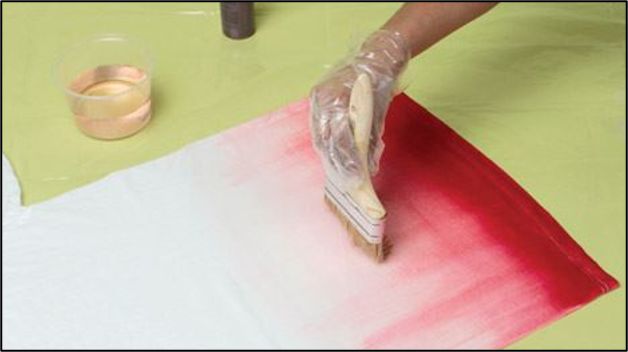
The final design is given below –
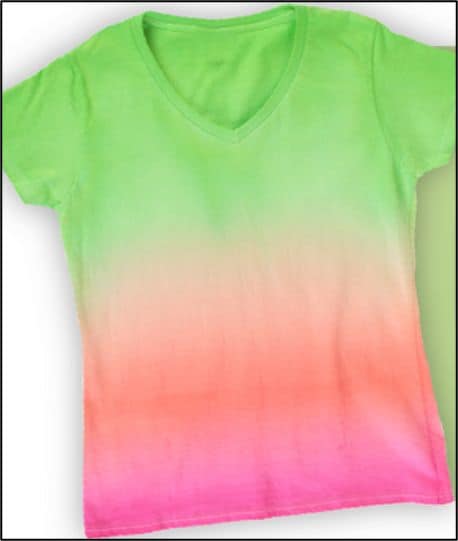
8. Crumple Tie Dye Technique
1. After laying the washed damp fabric on the work surface, make a crumpled mound fabric by scrunching. Make the fabric loosely or tightly crumpled according to your requirement.
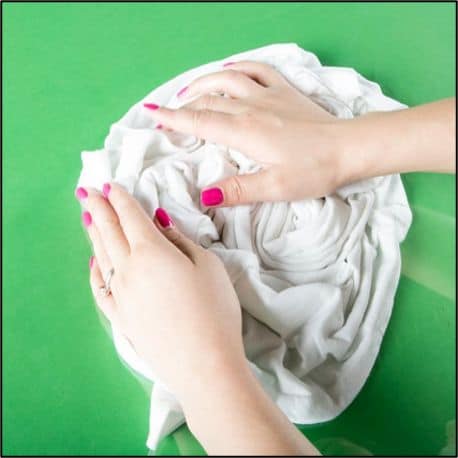
2. If you want a strictly defined crumple color design on the fabric, bind the fabric with rubber bands to secure it. Otherwise, you can continue without binding.
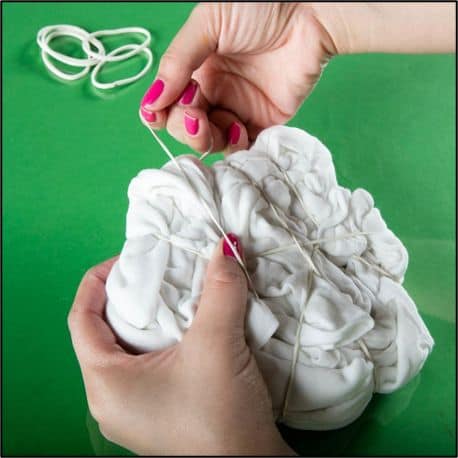
3. Apply the dye. Finally, follow the last basic step (step 5).
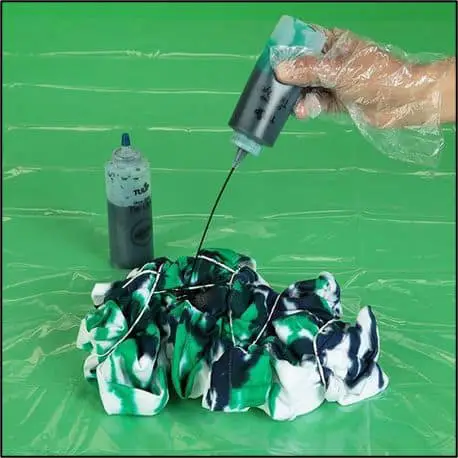
The final design is given below –
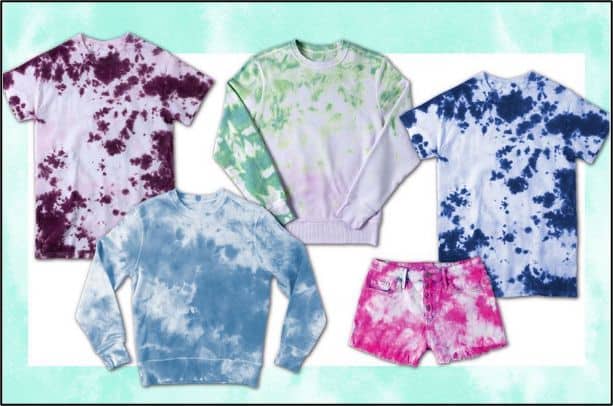
9. Ice Tie Dye Technique
1. Make a crumpled mound of the washed damp fabric by scrunching. Make the fabric loosely or tightly crumpled according to your requirement.
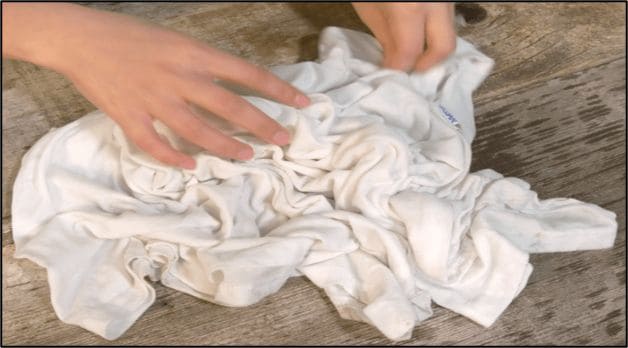
2. If you want a strictly defined crumple color design on the fabric, bind the fabric with rubber bands to secure it. Otherwise, you can continue without binding.
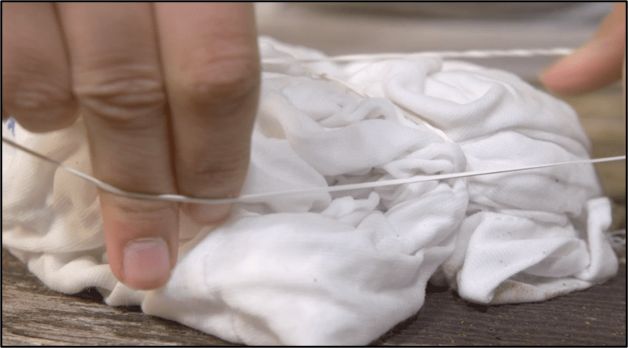
3. First, place a rack over a tub and then place the fabric over it. After that, place ice cubes over the fabric like the picture below. The dyes will puddle under the fabric and will drip down when the ice melts.
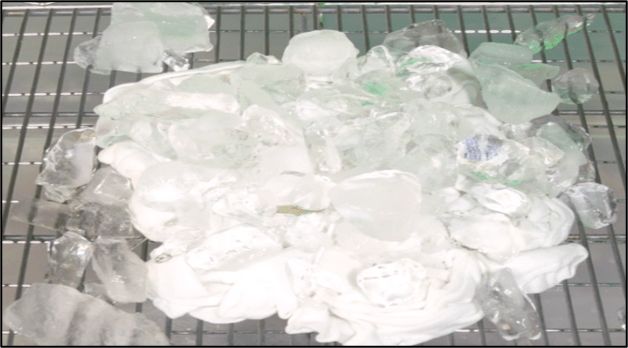
4. It is different from other tie-dye techniques as you have to use dye powder. Randomly sprinkle dye powder over the ice cubes according to your wish.
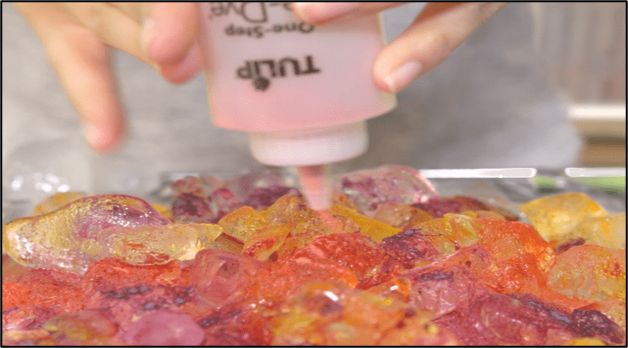
5. Wait until the ice cube melts. The melting time depends on the weather. Finally, follow the last basic step (step 5).
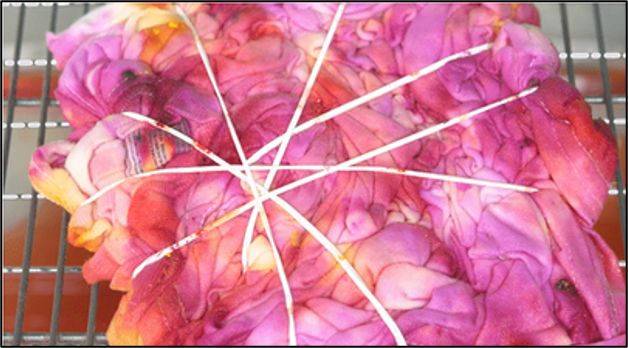
The final design is given below –
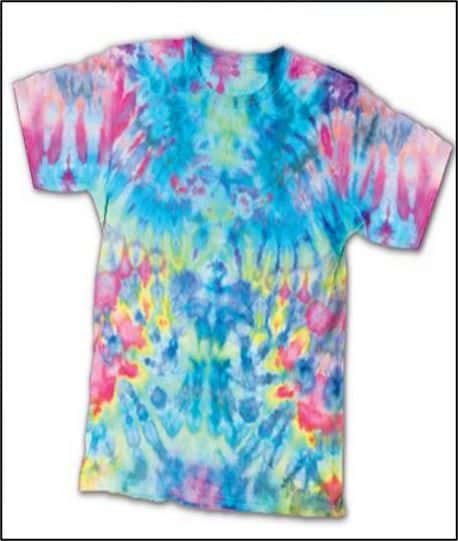
How to Tie Dye Mandalas
Now, if you don’t have special dye bottles, what will you do?
I am answering the question with another tie-dye technique. Let’s take a look at how to tie-dye mandalas.
- As you don’t have special dye bottles and your dye don’t have soda ash mixed with them, you have to pre-soak the fabric with soda ash before folding, and line dry it. Use 250ml of soda ash per gallon of water.
- In the picture below, the folding technique for producing mandalas is given.
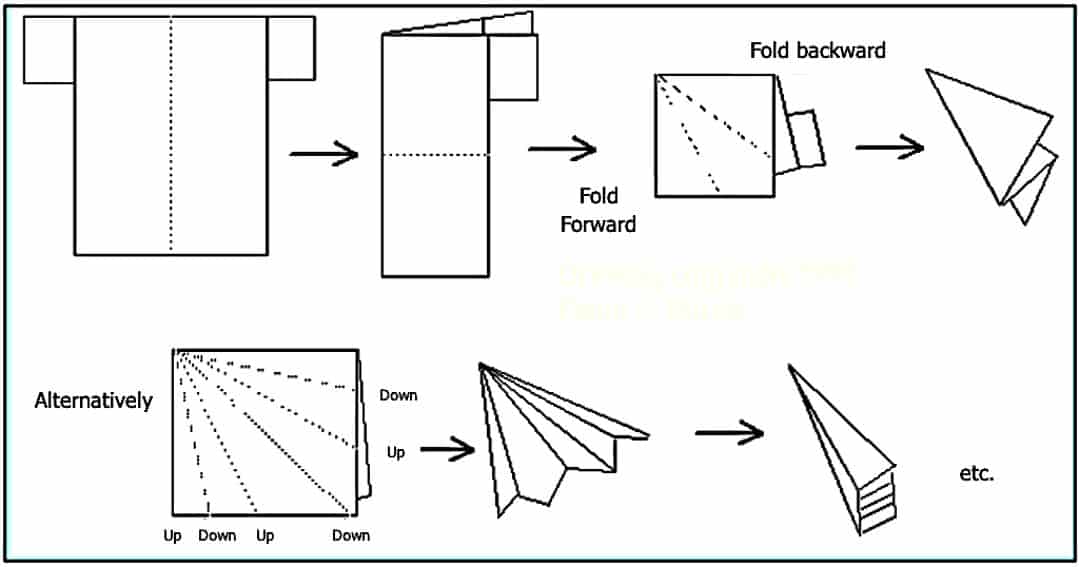 Mandala Tie Dye Folding Techniques with Pictures
Mandala Tie Dye Folding Techniques with Pictures - Bind the fabric with rubber bands. You can also use strings or artificial sinew.
- Apply the dye slowly on the tied cones. You can use a syringe carefully to inject dye inside for more precision and evenness.
- Wrap the fabric in plastic and keep it for 6-8 hours.
- First, wash the fabric with cold water and then with hot water. You can use detergent to ensure no hydrolyzed dyes available at the surface.
Now, remember this technique is for natural cellulosic fabric (Cotton, Viscose, etc.). To dye synthetics, you won’t have to add soda because different types of dyes require different auxiliaries and techniques. Just be aware of that. Learning the difference between tie dye and fabric dye will also help.
Well, that’s all for now. We hope with this easy-to-understand visual guide, you’ll be able to do achieve these easy tie dye ideas from the comfort of your home.
And if the pattern doesn’t look good to you, you can use clothes dye remover to give it a second go. But you’ll lose vibrancy, for sure.
REFERENCES

